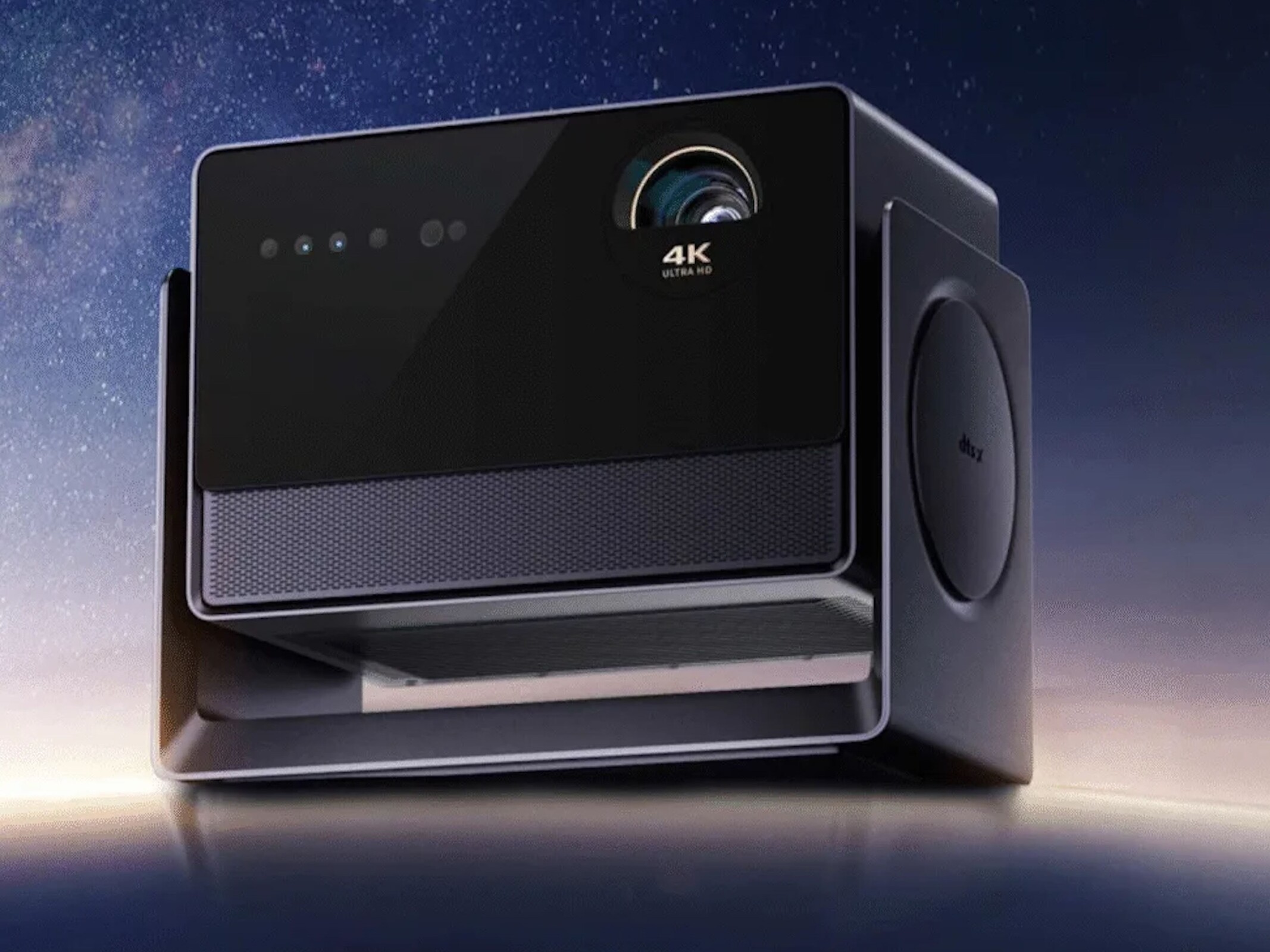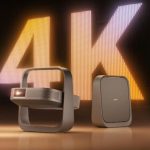We are witnessing the rise of a new flagship in the home cinema domain: the Dangbei S7 Ultra (also referred to in some markets as S7 Ultra Max). Engineered for the most demanding users, it breaks ground in brightness, cooling, optics, and smart features. Below, we present a deep-dive technical analysis, real-world implications, and positioning versus rivals — all the while making a case for why this model could redefine what a high-end projector should be.
Key Specifications Summary
| Feature | Specification |
|---|---|
| Native Resolution | 4K UHD (3840 × 2160) |
| Light Source | Triple-color RGB laser (48 laser diodes) |
| Peak Brightness | ~ 5,800 CVIA lumens (claimed) |
| Projected Brightness Standard | Some sources also refer to 6,200 ISO lumens in trade show settings |
| Native Contrast Ratio | 8,000 : 1 |
| Dynamic Contrast (with algorithm) | Up to ~ 65,000 : 1 (DynamicX / deep-black enhancement) |
| Optics / Zoom / Throw Ratio | 17 custom lenses; Optical zoom 0.98 – 1.6:1 (1.63×) |
| Projection Size Range | 80″ to 300″ |
| Cooling / Noise | Full-link liquid cooling, ~ 24 dB noise |
| Chipset / Memory | MediaTek MT9681, 8 GB RAM + 128 GB storage |
| Operating System & Features | Dangbei OS 6.0 (based on Android 14), autofocus, keystone, screen alignment, voice control |
| Connectivity | HDMI 2.1 (×2, one eARC), USB 3.0, USB-C, WiFi 6, Bluetooth 5.2 |
| Built-in Audio | Dual 15W speakers, Dolby Audio / DTS support |
| Dimensions / Weight | 336 × 202 × 287 mm; ~ 8.2 kg |
| Launch Price (China) | 15,999 CNY (~ US$2,200–2,300) |
Note: Some prior references to “S7 Ultra Pro” may represent regional naming variance. Most widely reported features align under the “S7 Ultra Max” nomenclature.
Revolutionary Features & Technical Innovations
1. Triple-Color Laser with 48 Diodes & Eclipse Optical Engine
Dangbei’s light engine uses 48 dedicated RGB laser diodes combined through polarization and advanced beam-combining optics. This architecture ensures vivid primaries and high uniformity across large screens.
An eight-layer anti-speckle module further suppresses laser artifacts to an extremely low level (claimed suppression up to 99.999%).
2. Multi-Iris / Variable Aperture System
To optimize contrast and dynamic range, Dangbei equips the unit with a three-stage iris (f/2.2 to f/6.0). This allows better control over black levels and depth of field under varying ambient light conditions.
The method mirrors advanced cinema folding techniques but adapted for laser DLP constraints.
3. Full-Link Liquid Cooling
To dissipate the significant heat generated by high brightness and tight optics, Dangbei introduces a full-link liquid cooling system. The system circulates coolant across the laser modules, chip, optics, and imaging pathway.
This cooling design is claimed to improve thermal management by ~50% over conventional air cooling, while keeping operational noise to ~ 24 dB — nearly whisper-quiet for such a powerful device.
4. Cinematic & HDR Support
The S7 Ultra supports Dolby Vision, HDR10+, HDR Vivid, and DTS:X audio decoding.
It claims full coverage of DCI-P3 and BT.2020 color gamuts, with factory color calibration achieving ΔE ≤ 0.8 for accurate reproduction.
Dynamic contrast enhancements via its DynamicX algorithm push effective contrast to ~ 65,000:1, enhancing shadow detail while maintaining brightness.
5. Intelligent Setup & Auto Correction
An AI-driven gimbal / spatial scanning system facilitates auto-keystone correction, auto-focus, and screen alignment, reducing manual tweaking.
The integrated stand allows 180° tilt, enabling projection onto ceilings, floors, or walls without extra mounts.
Voice control via far-field microphones enables natural commands over the interface.
6. Gaming & Motion Support
HDMI 2.1 ports (with eARC) and full bandwidth allow input up to 4K at high refresh rates. The S7 Ultra can push 240 Hz frames in gaming mode, making it suitable for fast-motion content and competitive gameplay.
Latency and motion smoothing specifics remain to be fully validated, but early impressions are favorable.
Real-World Implications & Performance
Brightness in Ambient Conditions
A peak brightness of ~ 5,800 CVIA lumens is among the highest claimed in home projectors.
However, CVIA is a softer standard than ANSI or ISO lumens, and some trade show reports suggest a 6,200 ISO lumens value (though that may be promotional).
In real viewing environments with moderate ambient light, users should expect that brightness to drop significantly, especially once contrast and black-level optimizations engage. Still, for living rooms without blackout curtains, this model should outperform many competitors.
Contrast & Black Level
Thanks to the variable iris and DynamicX algorithm, black levels are expected to rival mid-tier cinema projectors. Early measurement of 7,605 native contrast under controlled modes has been reported.
However, in absolutely dark rooms, conventional JVC/LCoS models may still pull ahead in absolute black depth. But the S7 Ultra closes the gap dramatically in a much more usable form factor.
Cooling & Noise
The liquid cooling setup allows sustained brightness without thermal throttling. Noise levels of ~24 dB mean the projector is barely perceptible during quiet scenes — a major advantage for immersion.
Thermal management also helps preserve longevity of laser modules and optics.
Setup Flexibility
The 0.98–1.6:1 zoom range gives a wide placement window without needing a variable throw lens or ultra short throw. This is incredibly beneficial in rooms where placement options are constrained.
Auto-correct features let even novice users quickly get an optimal, squared image without wrestling with knobs.
Smart Platform & Connectivity
Running on a capable MT9681 chipset with 8+128 GB makes the OS responsive and future-proof.
Its connectivity suite—dual HDMI 2.1, USB 3.0, USB-C, WiFi 6, Bluetooth 5.2—makes it compatible with virtually all modern devices.
Casting protocols include AirPlay, Miracast, and proprietary Dangbei projection modes.


